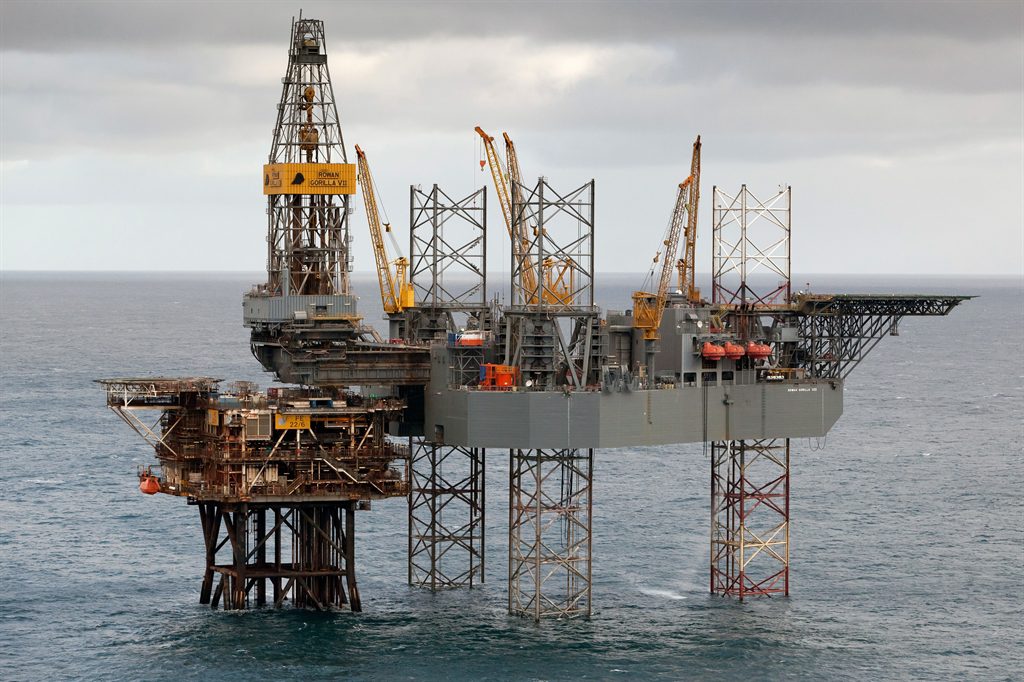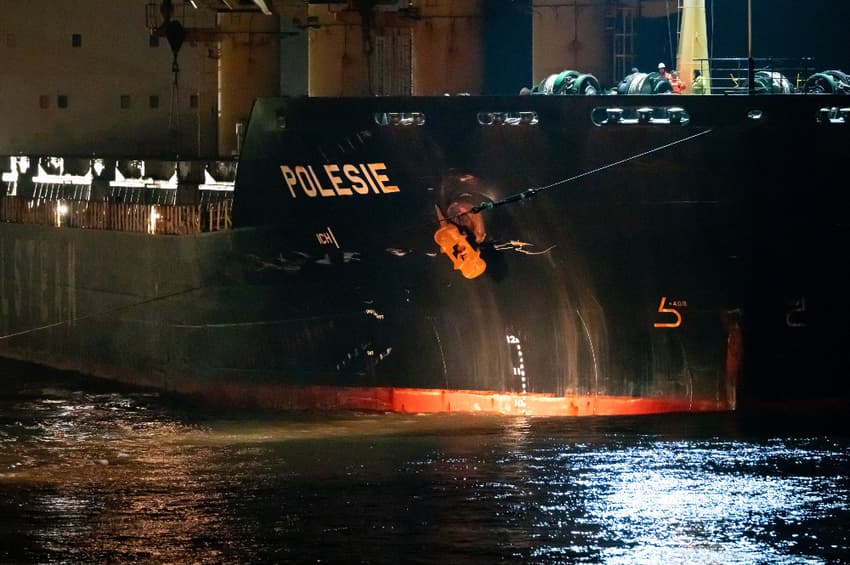On a fateful day in the North Sea, a collision occurred that has sparked an extensive search and rescue operation, capturing the attention of the world. The "Search Continues After North Sea Collision" serves as a reminder of the risks involved in maritime operations and the importance of safety measures in open waters. This incident has highlighted the need for better protocols and technology to prevent such accidents.
The maritime industry plays a pivotal role in global trade and transportation. However, the dangers lurking beneath the surface are often underestimated. The collision in the North Sea has reignited discussions around maritime safety and emergency response strategies. As authorities continue their search, the focus remains on ensuring the safety of those involved and preventing similar incidents in the future.
This article delves into the details of the collision, the ongoing search efforts, and the broader implications for maritime safety. By examining the causes, responses, and lessons learned, we aim to provide a comprehensive understanding of the situation while advocating for improved safety standards in the maritime sector.
- Unveiling Hdhubb4u Moviecom Your Ultimate Guide To Streaming And Downloading Movies
- Movierulz 2025 Torrent Your Ultimate Guide To Safe And Legal Streaming
Table of Contents
- Incident Overview: Understanding the Collision
- Search Efforts: The Race Against Time
- Causes Analysis: What Went Wrong?
- Technological Advancements: Enhancing Maritime Safety
- Regulatory Measures: Strengthening Protocols
- Environmental Impact: Assessing the Damage
- Human Factor: The Role of Crew and Training
- Economic Ramifications: The Cost of Collisions
- International Cooperation: Working Together for Safety
- Conclusion: Moving Forward with Safety in Mind
Incident Overview: Understanding the Collision
The North Sea collision has sent shockwaves through the maritime community. Involving two large vessels, this incident has become a focal point for discussions around maritime safety. The collision occurred during a routine voyage, highlighting the unpredictability of accidents at sea.
Key Details of the Incident
- Location: North Sea
- Vessels Involved: Two commercial cargo ships
- Time of Collision: Early morning
- Weather Conditions: Moderate
Despite the moderate weather conditions, the collision resulted in significant damage to both vessels and prompted an immediate response from maritime authorities. The search continues after North Sea collision as rescuers work tirelessly to locate missing crew members and assess the extent of the damage.
Search Efforts: The Race Against Time
The search and rescue operation following the North Sea collision is a testament to the dedication and expertise of maritime authorities. With time being of the essence, multiple teams have been deployed to locate missing crew members and ensure their safety.
- Unveiling The Power Of Prmoviesreports Your Ultimate Guide To Movie Insights
- Luis Armand Garcia A Rising Star In The Entertainment Industry
Challenges Faced During the Search
- Turbulent sea conditions
- Limited visibility
- Extensive search area
Despite these challenges, the search efforts have been bolstered by advanced technology and international cooperation, increasing the chances of a successful outcome. The ongoing search after North Sea collision underscores the importance of preparedness and collaboration in maritime emergencies.
Causes Analysis: What Went Wrong?
Investigations into the North Sea collision are ongoing, with experts examining various factors that may have contributed to the incident. While the exact causes remain unclear, preliminary findings suggest a combination of human error and technical malfunctions.
Potential Contributing Factors
- Navigation system failure
- Inadequate communication between vessels
- Pilot error
By analyzing these factors, authorities aim to identify areas for improvement and implement measures to prevent similar incidents in the future. The search continues after North Sea collision as efforts are made to uncover the root causes and enhance maritime safety.
Technological Advancements: Enhancing Maritime Safety
Technology plays a crucial role in maritime safety, and advancements in this field offer promising solutions to prevent collisions and improve emergency response. From advanced navigation systems to real-time monitoring, these innovations can significantly reduce the risk of accidents at sea.
Key Technologies in Maritime Safety
- Automatic Identification System (AIS)
- Global Positioning System (GPS)
- Collision Avoidance Systems
Investing in these technologies is essential for ensuring the safety of vessels and crew. As the search continues after North Sea collision, the importance of adopting cutting-edge solutions becomes increasingly apparent.
Regulatory Measures: Strengthening Protocols
Regulatory frameworks play a vital role in maintaining maritime safety standards. In response to incidents like the North Sea collision, authorities are reviewing existing protocols and proposing new measures to enhance safety.
Proposed Regulatory Changes
- Stricter navigation rules
- Enhanced crew training requirements
- Improved vessel inspection procedures
By implementing these changes, maritime authorities aim to create a safer environment for all vessels operating in the North Sea and beyond. The search continues after North Sea collision as efforts are made to strengthen regulatory measures and prevent future accidents.
Environmental Impact: Assessing the Damage
Collisions at sea not only pose risks to human life but also have significant environmental consequences. The North Sea collision has raised concerns about potential oil spills and other forms of pollution that could harm marine ecosystems.
Measures to Mitigate Environmental Damage
- Deployment of oil spill response teams
- Monitoring of affected areas
- Implementation of cleanup strategies
Addressing these environmental concerns is crucial for preserving the delicate balance of marine life. The search continues after North Sea collision as efforts are made to minimize the impact on the environment.
Human Factor: The Role of Crew and Training
The human factor remains a critical element in maritime safety. Proper training and adherence to safety protocols can significantly reduce the likelihood of accidents. The North Sea collision has highlighted the importance of equipping crew members with the necessary skills and knowledge to handle emergencies.
Importance of Crew Training
- Regular safety drills
- Emergency response training
- Ongoing education programs
By investing in crew training, vessel operators can enhance the preparedness of their teams and improve overall safety standards. The search continues after North Sea collision as focus remains on the human factor in maritime operations.
Economic Ramifications: The Cost of Collisions
The economic impact of maritime collisions cannot be overlooked. From repair costs to potential lawsuits, the financial burden of such incidents can be substantial. The North Sea collision serves as a reminder of the economic implications of accidents at sea.
Key Economic Costs
- Vessel repair and replacement
- Lost cargo and revenue
- Legal and insurance expenses
Understanding these costs is essential for stakeholders in the maritime industry to prioritize safety and risk management. The search continues after North Sea collision as the economic ramifications are assessed and addressed.
International Cooperation: Working Together for Safety
Maritime safety is a global concern that requires international cooperation and collaboration. The North Sea collision has demonstrated the importance of working together to enhance safety standards and improve emergency response capabilities.
Benefits of International Cooperation
- Shared resources and expertise
- Coordinated response efforts
- Standardized safety protocols
By fostering international cooperation, the maritime community can create a safer and more secure environment for all vessels. The search continues after North Sea collision as efforts are made to strengthen global partnerships in maritime safety.
Conclusion: Moving Forward with Safety in Mind
The North Sea collision has underscored the importance of maritime safety and the need for continuous improvement in this area. As the search continues after North Sea collision, it is crucial to learn from this incident and implement measures to prevent similar accidents in the future.
By analyzing the causes, enhancing technology, strengthening regulations, and prioritizing the human factor, the maritime industry can take significant steps towards ensuring safer operations. We invite readers to share their thoughts and insights in the comments section below. Additionally, consider exploring other articles on our site for more information on maritime safety and related topics.
- Hdb4uin Your Ultimate Guide To Discovering Highquality Housing And Real Estate Listings
- The Rockefeller Family A Legacy Of Wealth Power And Influence


